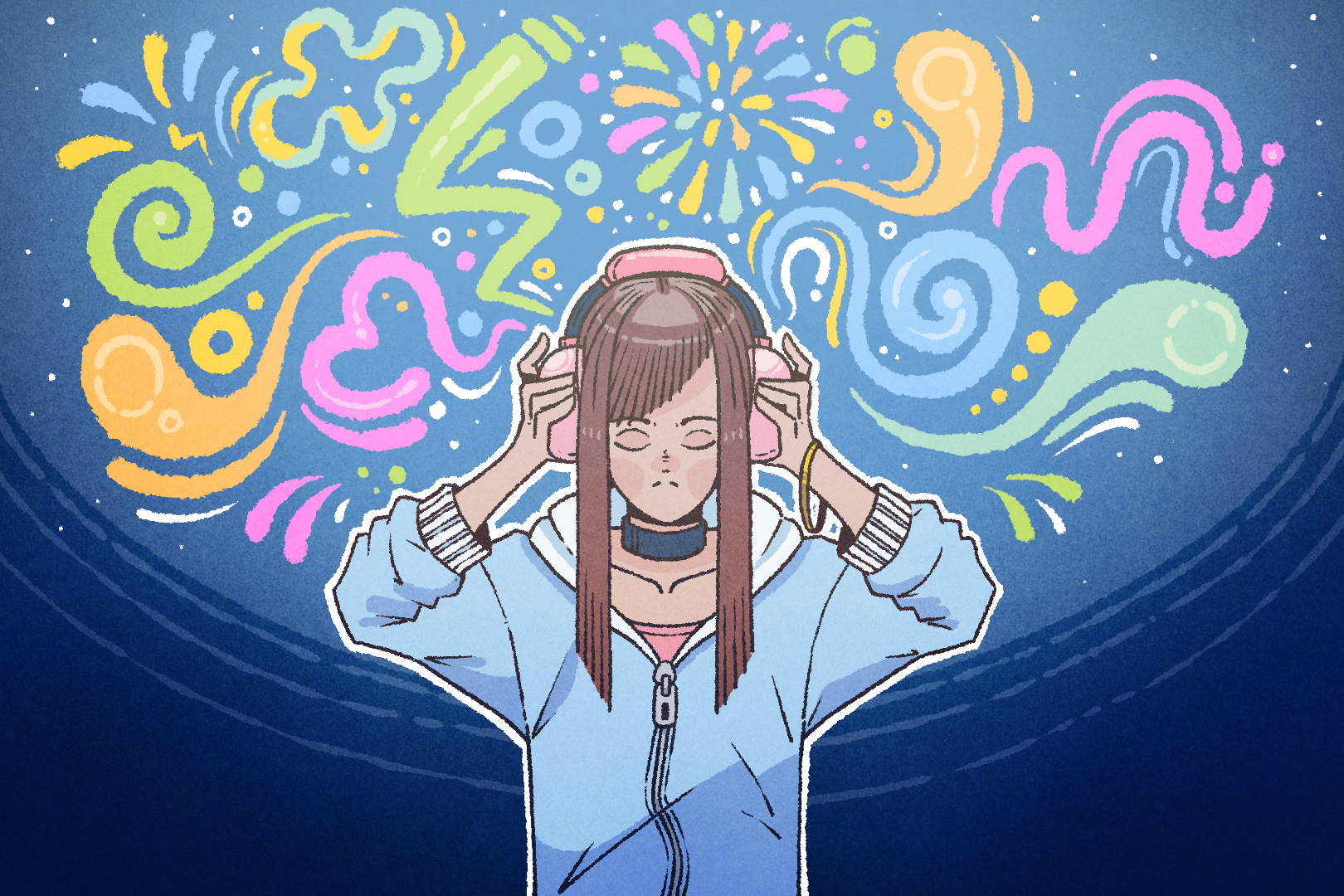A breakdown of what chromesthesia is at its core—students share their connections to it.
When pressing play on a song on your phone, your only intention is to appreciate the track in question. For some, passively or actively listening to music involves more than giving an ear to it.
This is when synesthesia meets with music. Synesthesia is essentially an occurrence where sensory crossovers happen. This combination of different human senses collide and merge. It can come in various degrees and causes some people to associate a sound or taste with a number, for example.
There are also about 80 different types, subtypes, manifestations and other similar phenomena of synesthesia. Chromesthesia is one of them, which specifically defines people who see colours when listening to music. It can also take the shape of “hearing a certain timbre or musical note, smell a perfume and hear a sound, or see a word and taste a flavour,” according to Pitchfork magazine. Additionally, American neurologist and author Dr. Cytowic indicates that about four per cent of people have synesthesia in some capacity. An array of artists like Lady Gaga, Billy Joel, Lorde, and composer and pianist Duke Ellington had it.
Within the music industry, artists have shared about their personal synesthesia. During an interview with Nylon magazine, Billie Eilish notably expressed how it helps her creative process, especially during the creation of music videos, her artworks and song choices during live performances. The bond between artists’ synesthesia and their careers can have tangible impacts on the image of their work. Indeed, the album cover of Frank Ocean’s Channel Orange is a straightforward orange canvas since it was the colour he saw when falling in love for the first time.
Other examples include Pharrell Williams seeing burgundy or baby blue when listening to Earth, Wind & Fire when younger, and Kanye West seeing dark brown and purple when hearing basslines. When creating an original score or forming any piece of music, Devonté Hynes aka Blood Orange explained in a TED Talk that he starts with patterns and colours, and layers them like a picture. The artist associates yellow with the C key, pink with F, brown with E, and red with A, which creates a canvas that helps him fill any gaps.
Copy editor at The Concordian Mackenzie Sanche shares that she’s had grapheme-colour synesthesia since a young age, which causes her to associate numbers and letters with specific colours. Having this type of synesthesia made Sanche good at remembering numbers, dates and certain spellings because she’d see the colours splattered in her mind and could then identify which numbers she was looking for.
Specific associations such as Jacques Cartier’s first trip to Quebec in 1534 show up as a splash of white, lilac, red and royal blue in her mind. “I remember when I realized in CEGEP that this type of memorization wasn’t the norm—as a visual artist, I felt honoured to have this condition that merged my art to things I’m not so strong at, like math and history,” she adds.
Music-wise, Sanche does have some bits of chromesthesia. Some songs she grew up listening to still appear as full paintings in her mind, such as “Tears and Rain” by James Blunt, which translates to dark blue and lime green cylinders rising and falling. Sanche notes that while her synesthesia rarely manifests that way anymore without concentration, her memories are forever engraved in her head.
There is however a fine line between memory associations with music and synesthesia itself. Zixuan Li, a first-year communications student, vividly associates listening to a playlist featuring the band Khruangbin with the past winter semester. She had just gotten herself new headphones and wore them all the time to school. “I spent most of my time at the downtown campus and would often go to the hive café and JMSB building during that time,” Li shares.
After leaving Montreal during the summertime and rarely listening to music throughout her trip, the communications student revisited Khruangbin and got hit by a wave of nostalgia. “I could smell the hive café where I’d typically order a grilled cheese and cappuccino and physically feel the heat of the JMSB building,” adds Li.
Whether it’s musicians or your next-door neighbour, synesthesia—especially when interacted with through music—is more common than we may think.
